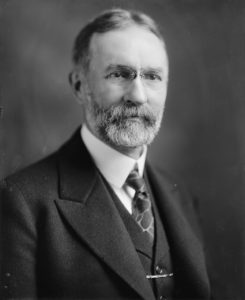How a 91-year-old Supreme Court case from Ohio echoes in Austin’s zoning plan
Friday, December 8, 2017 by
Audrey McGlinchy, KUT Austin Mayor Steve Adler sat in front of nearly 200 people gathered at the Covenant Presbyterian Church in early November. He’d been invited by the Allandale Neighborhood Association in Northwest Austin to answer questions about CodeNEXT, the city’s rewrite of its Land Development Code.
Adler began by hyping the city.
“(Austin) is a, uh, a magical place, I think,” he said. Soon, the booing began.
Adler said one goal of CodeNEXT is to enable more housing types to be built in the city, where most of the housing consists of single-family homes and large apartment buildings.
“No!” audience members yelled. Others said they were worried about increased traffic and the loss of neighborhood aesthetics. One woman shouted that her neighborhood did not want CodeNEXT, so Adler and city leaders should take their proposition elsewhere.
Scott Ehlers, the neighborhood association president, posed questions submitted by the audience to Adler.
“There’s a lot of vacant and commercially underutilized space in Austin,” he said. “Why is there not a concerted effort to develop that land before destroying the quality of traditional, central city neighborhoods?”
Later, he read a question about parking: “(CodeNEXT) reduces the minimum number of parking spaces that each lot must provide, forcing additional cars to park on the street.”
How did we get to this battle? What gives cities the right to tell people what can and can’t be built on their land?
Welcome to Euclid, Ohio
“The language you describe being used by people who are resisting change clearly has some similarity to a Supreme Court decision almost 100 years ago,” said Richard Kahlenberg, a senior fellow at the Century Foundation, a left-leaning think tank based in New York.
In the early 20th century, municipalities began to consider planning for land development. In 1916, New York City adopted the first comprehensive zoning plan in the U.S. Six years later, the small town of Euclid, Ohio, joined the big city and passed its first zoning plan, separating single-family homes from duplexes, duplexes from apartments, apartments from commercial space and everything else from industry.
“Euclid was an eastern suburb of Cleveland,” said Michael Allan Wolf, who wrote the book “The Zoning of America: Euclid v. Ambler.” “It was a suburb that was seeking to prevent the growth of Cleveland in the eastern direction. They didn’t want industrial development … they wanted to maintain the character of their community.”
The Ambler Realty Co. owned a parcel of 68 acres in the town. A portion of this land was zoned residential by the city, upsetting Ambler’s plans to use it for industrial purposes and stripping it of potential profit. The company sued the town, arguing its private property rights had been violated.
Newton Baker, who had served as secretary of war under Woodrow Wilson, represented Ambler. And he was successful, at first.
“He won,” said Bill Fischel, professor of economics and legal studies at Dartmouth College. “He had the entire zoning law struck down in federal court.”
In his opinion, Judge David Westenhaver deemed zoning unconstitutional and argued that it could result in the segregation of cities.
“The true reason why some persons live in a mansion and others in a shack … why some live in a two-family dwelling and others in an apartment, or why some live in a well-kept apartment and others in a tenement, is primarily economic,” Westenhaver wrote. “The result to be accomplished is to classify the population and to segregate them according to their income.”
For people like Kahlenberg, the judge’s opinion was prophetic.
“In communities that have higher levels of exclusionary zoning … we see much greater economic segregation of people,” said Kahlenberg, who wrote an op-ed about zoning in The New York Times earlier this year. A study by two UCLA professors published in 2015 found that more restrictions on density led to concentrations of wealth.
“And that matters because where you live has a great deal to do with what kind of life you can enjoy,” he said.
A “widower’s affection for the village”
James Metzenbaum was serving on the village council when Euclid passed its zoning plan. When Ambler sued, he agreed to represent the town.
Two years earlier, his wife, Bessie, had died suddenly. His affection for her was strong.
“Two or three times a week, for four decades, Metzenbaum visited the cemetery,” Wolf wrote in his book. “Along with Bessie’s ashes, the mausoleum contained small living quarters and a rocking chair and was supplied with electrical power.”
Metzenbaum had installed a fireplace and a bed so he could stay the night. When the lawyer died nearly 40 years after Euclid was decided, it was because of a heart attack he suffered while trying to shovel his car out of snow at the cemetery.
In his book, Wolf argues that part of the reason Metzenbaum argued so fervently for Euclid’s zoning was to preserve the village as it was when his wife was alive.
Bessie Metzenbaum’s legacy “can be traced to her widower’s affection for the village that was the young couple’s home during their short life together,” he wrote.
“If not for James Metzenbaum’s zealous advocacy and devotion for his wife, maybe the folks in Austin wouldn’t have anything to complain about right now,” Wolf said.
The highest court in the land
The village of Euclid appealed the lower court’s decision to the U.S. Supreme Court. In a 6-3 decision, the court deemed zoning constitutional and within a municipality’s power.
“The local government had made a not unreasonable decision to divide the village up and to classify land by use, area and height,” Wolf said. “They have the power, in fact I would argue they have the authority, to regulate on behalf of the public to protect the public health, safety, morals and general welfare.”
Justice George Sutherland, considered one of the more conservative justices at the time, issued his opinion on Nov. 22, 1926. He acknowledged that the idea of separating factories, or industry, from residential parts of town had been established to ensure the safety of residents. But the crux of more recent zoning, he wrote, was this idea that commercial should be separated from residential and that types of houses should be separated from one another.

U.S. Supreme Court Justice George Sutherland wrote the majority opinion upholding zoning in the Euclid decision.
Writing for the majority, Sutherland described why single-family detached homes should be separated from other types of housing. He wrote that apartment buildings interfere “by their height and bulk with the free circulation of air and monopoliz(e) the rays of the sun which otherwise would fall upon the smaller homes.” Apartment buildings, Sutherland wrote, bring with them “the disturbing noises incident to increased traffic and business, and the occupation, by means of moving and parked automobiles, of larger portions of the streets.”
Finally, he wrote, “the residential character of the neighborhood and its desirability as a place of detached residences are utterly destroyed.”
Fischel said by writing this, Sutherland and the majority of the court went further than zoning advocates expected them to.
“(The opinion) seems to raise the single-family house up to the top of the pyramid, the god to be worshiped by all land use regulations,” Fischel said.
The echoes of Euclid
Euclid v. Ambler gave Austin and municipalities across the country the legal right to zone and rezone their land. Two years after the case was decided, the city of Austin passed its first comprehensive zoning plan. This 1928 plan denied services to African-American residents who did not live east of what is now Interstate 35, forcing the city to segregate by race.
In many ways, it created the city we’ve inherited today. Some hope CodeNEXT can desegregate the city, while others hope it won’t worsen current segregation.
This story was produced as part of the Austin Monitor’s reporting partnership with KUT.
The Austin Monitor’s work is made possible by donations from the community. Though our reporting covers donors from time to time, we are careful to keep business and editorial efforts separate while maintaining transparency. A complete list of donors is available here, and our code of ethics is explained here.
Curious about how we got here? Check out the Austin Monitor’s CodeNEXT Timeline.
You're a community leader
And we’re honored you look to us for serious, in-depth news. You know a strong community needs local and dedicated watchdog reporting. We’re here for you and that won’t change. Now will you take the powerful next step and support our nonprofit news organization?









